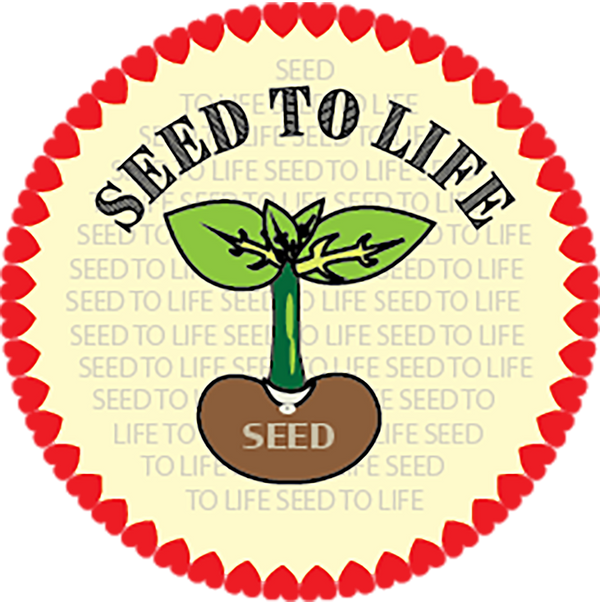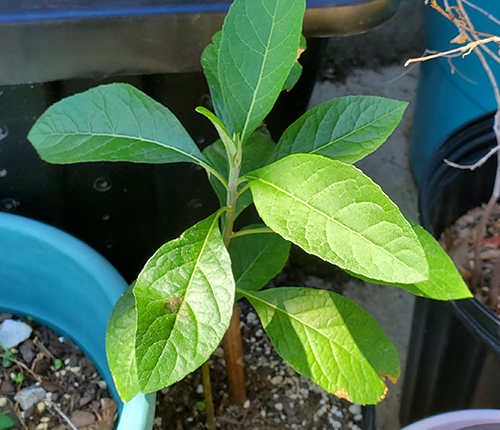According to one report by Royal Botanic Garden (2016), there were approximately 391,000 species of identified plants in the world. But according to UN report on the number of species, the number of species is declining rapidly every year. I understand that with changing climate, evolution, and the factors that we don’t even know about, some species are going to be lost. It makes me very sad that the plants and trees that we once used to see in our childhood are hard to find easily. The plants that lived for thousands of years are getting lost in this rapidly changing world. Through my YouTube channel Seed to Life, I try to explore different plants, their ancient history, propagation methods, growing requirements, and health benefits. Today I’m going to introduce you to one more interesting plant that is used as traditional medicine by humans for themselves and for their livestock. And, what is even more interesting is that chimpanzees have been observed to eat these leaves to get rid of the intestinal parasites. Isn’t that amazing?
Origin and Distribution
These immensely healthy bitter leaf plants are originally from African Tropics and other parts of Africa, especially from the countries Camaroon, Nigeria, and Zimbabwe. But now, they are becoming popular worldwide, an attention much deserved.
Botanical Name
Vernonia amygdalina
Other Names
Some of the names in different languages are as follows.
- Ewuro
- Onugbu
- Oriwo
- Ityuna
Medicinal Uses of African Bitter Leaf Plant
The leaves and root extracts or decoctions are used as traditional remedies for fever, diarrhea, hiccups, kidney problems, and malaria. Infusion of the roots is used for the treatment of intestinal worms. This remedy is not only used by humans to cure themselves and their livestock but as I mentioned earlier also by chimpanzees who use the leaves to get rid of the intestinal worms. The plant is used as a natural medicine for treating malaria. The leaves are part of folk remedies in treating various infections and sores. The plant is also believed to be effective against diabetes, snake bite, and cancer.
The Bitter Leaf plant is a good source of dietary fibers, proteins, various minerals like calcium, magnesium, potassium, sodium, manganese, iron, zinc, and copper. Some of these nutrients and anti-nutrients are lost when the leaves are processed. So, squeeze washing and cooking can reduce the efficacy of these phytochemicals. The water content of the leaves is more than 80 percent.
I always try to find out both the good and bad effects of consuming any new plant. The research on the side effects of the bitter leaf plants is very limited. If grown in the soil contaminated with heavy metals, the plants may absorb harmful chemicals. It can cause allergic reactions and side effects due to the anti-nutritional factors in them but other than that there was not much information available. But in my opinion, if something is that potent as a medicine then it should be consumed with care. I hope in future all plants will be studied in more detail for their good and bad effect. Till then, I believe like other leafy vegetables, it is okay to enjoy this vegetable in moderation.
Nutritional Content
The nutritional composition of Vernonia amygdalina leaves per 100 g edible portion is: source
Energy- 218 kJ (52kcal)
- Water- 82.6 g
- Protein -5.2 g, fat 0.4 g
- Carbohydrate -10.0 g,
- Dietary fibers – 1.5 g
- Calcium (Ca) -145 mg
- Phosphorus (P) – 67 mg
- Iron (F)e -5.0 mg
- Ascorbic acid 51 mg
I hope after learning about this plant you feel like growing it now.
Check out the video to know the growing requirements for bitter leaf plants and a healthy recipe.
Growing African Bitter Leaf in Home Garden
I found the dried fava beans in the grocery store and just for fun, decided to try growing them.
Propogation of Bitter Leaf Plant from Seeds
African bitter leaf plants can be propagated by seeds as well as cuttings. Seed germination time is about 2-3 weeks. If you get your hands on the seeds and want to grow these plants from seeds then make sure to keep the soil moist.
Propogation of Bitter Leaf Plant from Cuttings
The faster and easier way to propagate these plants is to grow them from cuttings. Here, you can see my plant is still very young. I took a cutting of approximately 6-8 inches long from this plant. I removed all the big leaves leaving only two top ones. And Next, I’ll drop the cutting in clean water. You can keep the cutting next to a sunny window, partial shade or under a grow light. I’m going to use grow light because the outside temperature keeps on changing and I don’t want that to ruin the cutting. After the root buds start appearing on the stems, I’ll plant them in soil.
Soil Requirements for Growing Bitter Leaf Plant
The soil has to be well draining but also should retain moisture since this plant loves moist soil and grows well in it. According to some studies as the acidity of the soil that means the organic content increases, the heavy metal concentration increases. So make sure to give the plant a good compost meal on a regular basis.
Is Bitter Leaf Plant Frost Tolerant?
African bitter leaf is a sun-loving plant. It is native to Africa so I doubt that it will tolerate frost. Considering that it is grown in Nigeria, it is safe to assume that the bitter leaf plant prefers a tropical climate. So if winters are harsh in your region then You can either keep it potted and bring it inside for overwintering or be ready to lose the tree during winter.
What Does Bitter Leaf Tree Look Like?
A mature tree looks like a small tree or a tall shrub. It can grow up to a height of 3 meters. These plants grow faster in the rainy season. So be prepared to harvest the leaves in spring. You can keep pruning this plant frequently to induce new shoots. Older plants produce fewer leaves than young ones. The plant can last for up to 7 years. Leaves are spindle shaped and somewhat velvety in texture. They can easily get bruised and have no smell. The flowers are white in color and form in clusters near the ends of the shoots.
Uses of Bitter Leaf Plant
African farmers harvest the leaves and dry them. You can find the dried leaves in online shops or international food markets near you. They are used in soups and other medicinal remedies. The paste of the leaves is applied to wounds like an antiseptic as as a home remedy. The leaves are ground/chopped and cooked with meat, shrimps and chopped peanuts. For consuming young shoots preferred because they taste less bitter compared to the leaves from mature stems? So it depends on your taste preferences how you like them.
Squeeze-Washing Bitter Leaf Leaves
Before you prepare a dish with bitter leaf leaves, it is very important to wash them thoroughly multiple times. Squeeze washing them multiple times removes the bitterness as much as possible. The bitterness of the leaves comes from the anti-nutritional factors of the bitter leaves. I almost crush the leaves and let the juices run off. I’m aware that due to this, I’m going to lose some nutrients, cut I know my taste buds are not adapted to that much bitterness and I have to get rid of the harmful chemicals.

Bitter Leaf Soup

Before you prepare a dish with bitter leaf leaves, it is very important to wash them thoroughly multiple times. Squeeze washing them multiple times removes the bitterness as much as possible. The bitterness of the leaves comes from the anti-nutritional factors of the bitter leaves. I almost crush the leaves and let the juices run off. I’m aware that due to this, I’m going to lose some nutrients, cut I know my taste buds are not adapted to that much bitterness and I have to get rid of the harmful chemicals.


